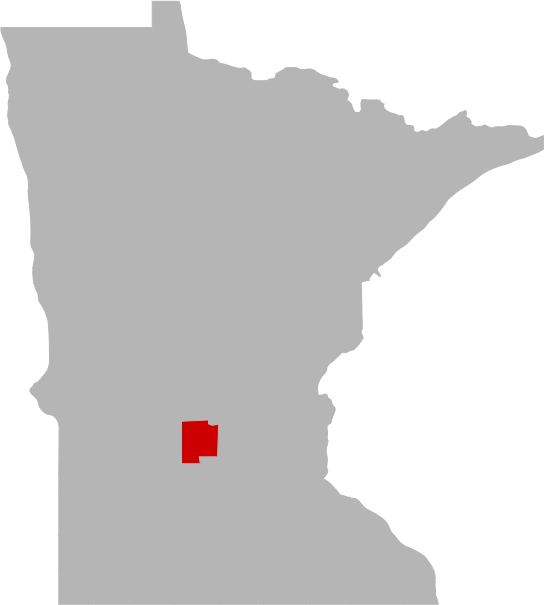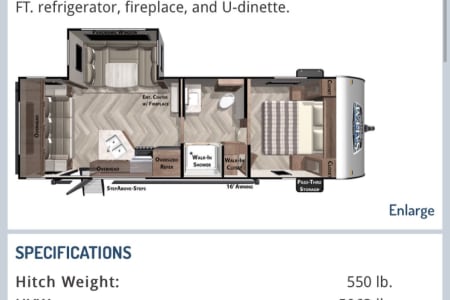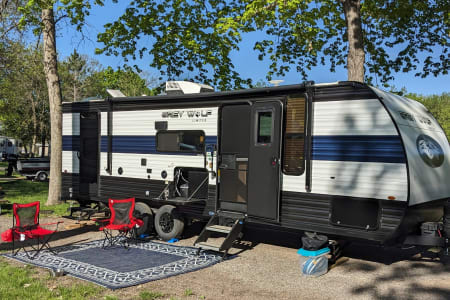Today's Best Fishing Times
Get the best fishing times for Lake Arvilla with Lake-Link's Fishing Forecast. SEE MORE


Share Your Catch & Win!
Frequently Asked Questions About Lake Arvilla, MN
- How big is Lake Arvilla?
- How deep is Lake Arvilla?
- What kind of fish can you catch in Lake Arvilla?
- What are the closest cities to Lake Arvilla?
- Are there places to stay in the Lake Arvilla area?
- Are there boat launches on Lake Arvilla?
- Are there places to eat and drink near Lake Arvilla?
- What is the average air temp for Lake Arvilla?
How big is Lake Arvilla?
How deep is Lake Arvilla?
What kind of fish can you catch in Lake Arvilla?
Other fish species in the lake include Common Shiner, Creek Chub, Golden Redhorse, Golden Shiner, Greater Redhorse, Green Sunfish, Hybrid Sunfish, Shorthead Redhorse and White Sucker.
What are the closest cities to Lake Arvilla?
Are there places to stay in the Lake Arvilla area?
More Lodging Options
Are there boat launches on Lake Arvilla?
Are there places to eat and drink near Lake Arvilla?
Explore the Lake Arvilla area in a RV
Are you looking for an adventurous vacation option that won't break the bank? Look no further than renting an RV! Contrary to popular belief, the process is much simpler than you might imagine. With just a few easy steps, you'll soon be experiencing the ultimate freedom and convenience of exploring the open road in your very own recreational vehicle. And the best part? RV travel can save you up to 60% compared to other types of vacations! With the money you'll save, you'll be able to travel even more and create unforgettable memories along the way. So why wait? Start planning your next adventure today with an RV rental. Learn more about renting a RV.




2024 Forest River Cherokee Grey Wolf 23DBH-Pets Stay Free! DELIVERY ONLY
Annandale, MN
History & Status of the Fishery
A standard survey was conducted at Arvilla Lake beginning on 7/09/18 to monitor the lake's fish population and evaluate the Walleye fry stocking regime. Arvilla is a class 43 lake and net catches were compared to similar lakes around the state. The 2014 lake management plan (LMP) lists Black Crappie, Northern Pike, and Walleye as primary management species, while Bluegill and White Crappie were ranked as secondary species at Arvilla. In 2018, a total of 16 species, plus Hybrid Sunfish, were sampled in the gill nets (GN) and trap nets (TN). The dissolved oxygen concentration fell below 2.0 mg/l at 9 feet. The maximum depth recorded for this survey was 10.0 feet. Water clarity was poor with a secchi disk reading of 1.8 feet, due to an algae bloom. Arvilla has a long history of experiencing partial winterkills with the latest events occurring in 2001, 2008, 2010, 2011, 2013, and 2014. In the past, development of a stable fishery was not possible due to winterkill frequency but this could be changing as winterkill frequency and winter severity diminish. Fish presently have had four years to grow in the absence of winterkill and anecdotal reports indicated good fishing for Bluegill, Black Crappie, Northern Pike, and Yellow Perch in that timespan. Fish that survived the 2014 partial winterkill likely grew fast and reached a large size quickly due to reduced competition. Frequency and severity of winterkill can greatly influence fish abundance at Arvilla Lake. Only Walleye were stocked following the 2014 winterkill as other species had the opportunity to repopulate via immigration from the river or from spawning events from surviving broodstock. Curlyleaf pondweed, a non-native invasive aquatic plant, can be abundant (forming surface mats) in May and June at Arvilla Lake. Anglers should be extra careful to drain all the water from their boats when leaving Arvilla Lake because upstream Washington Lake has been designated as being infested with the zebra mussel, an aquatic invasive species.
Gill nets (GN) sampled low numbers of Walleye (8) for a catch rate of 1.3/net, which was below the normal range for this lake type. The 2014 LMP's long range goal for Walleye (>2.3/GN) was not met. The 2009 catch rate was moderate (6.0/net), and was the only historical catch rate that was within the lake's normal range. Catch rates from 1977 to 2018 (n=8), under various stocking regimes, were mostly low ranging from 0.0 to 6.0/net with an average of 1.3. In 2018, gill netted Walleye were 16.1 to 22.2 inches long with an average of 19.0. Trap nets sampled Walleye up to 26.3 inches in length. Gill netted Walleye were estimated to be age-2 to age-5 with four year classes present. All year classes were considered to be weak. Walleye growth was fast. In 2018, non-stocked year classes (2015) accounted for 38% of the GN aged walleye. The contribution from natural reproduction during fry stocked years (2013, 2014, and 2016) was unknown. Connections to Washington Creek, the North Fork of the Crow River, and winterkill confounds Walleye stocking evaluation efforts. The low catch rate in 2018 indicated that there was not a significant contribution to Arvilla's Walleye population from Washington Creek. The latest fry stocking regime (138,000 every other year) began in 2007. The regime was immediately restarted following winterkills in 2010 and 2014. Gill net catch rates from 2009 to 2018 (n=2) ranged from 1.3 to 6.0/net with an average of 3.7, indicating an inexpensive and moderately successful stocking strategy. The previous stocking regime (69,000 fry two of three years, initiated in 1998) produced a catch rate of 1.8/net in 2004.
Gill nets sampled high numbers of Northern Pike (81) for a catch rate of 13.5/net, which was above the lake's normal range and the second highest ever recorded at Arvilla. The 2014 LMP's long range goal (> 1.1/net) was met. The 2009 catch rate was 6.0/net. Gill net catch rates from 1977 to 2018 (n=8) were highly variable, ranging from 0.0 to 16.0/net with an average of 6.4. Historically, Northern Pike recruitment would be classified as variable likely due to the lakes winterkill frequency. In 2018, gill netted Northern Pike were 16.3 to 34.7 inches long with an average of 23.2. Trap nets sampled Northern Pike up to 38.0 inches in length, indicating that memorable sized fish were present. Northern Pike have never been stocked into Arvilla Lake and natural reproduction has provided a sufficient fishery for many years. Northern Pike were not aged, but size distribution data indicated that multiple year classes were present. New Northern Pike zone regulations went into effect in the spring of 2018. Arvilla is in the north central regulation zone which has a 10 fish bag limit, where all fish from 22 to 26 inches in length have to be immediately released and only two harvested fish could be over 26 inches long. Spearers are allowed to have one fish in the protected slot limit. The regulation was designed to improve the size structure in lakes across the state with "stunted" Northern Pike populations. Arvilla was occasionally clear enough for spearing in recent years but most years it was too turbid. High numbers of Northern Pike (>6/GN) could be having negative effects on Walleye stocking efforts at Arvilla Lake.
Trap nets sampled moderate numbers (102) of Black Crappie in 2018 for a catch rate of 11.3/net, which was within the normal range for this type of lake. The 2014 LMP's long range goal (>1.2/TN) was met. The 2009 TN catch rate was similar at 13.1/net. Catch rates from 1977 to 2018 (n=8) were variable, ranging from 0.0 to 37.8/net with an average of 13.5. In 2018, trap netted Black Crappie were 2.4 to 11.8 inches long with an average of 8.2. Approximately 25% of the TN catch was 10 inches or longer, indicating some quality fish are available. Gill nets sampled moderate numbers of Black Crappie (44) for a catch rate of 7.3/net, which was within the normal range for this type of lake. The 2009 GN catch rate was 23.5/net. Catch rates from 1977 to 2018 (n=8) were variable, ranging from 0.0 to 23.5/net with an average of 6.7. In 2018, gill netted Black Crappie were 4.1 to 9.9 inches long with an average of 6.3. Black Crappie were not aged, but size distributions indicated that multiple year classes were present. Higher catch rates for Black Crappie during the last two surveys could be having negative impacts on Walleye fry stocking efforts at Arvilla Lake.
Trap nets and gill nets failed to sample any White Crappie in 2018. The 2014 LMP's long range goal for White Crappie (maintain presence) was not met. The 2009 TN catch rate was 6.2/net. Historical TN catch rates from 1977 to 2018 (n=8) ranged from 0.0 to 7.2/net with an average of 2.4. The 2009 GN catch rate was 8.0/net. Historic GN catch rates from 1977 to 2018 (n=8) ranged from 0.0 to 8.0/net with an average of 1.2. Historic catch data indicated that White Crappie were rarely abundant at Arvilla Lake.
Trap nets sampled high numbers of Bluegill (251) for a catch rate of 27.9/net, which was above the lake's normal range and the second highest ever recorded at Arvilla. The 2014 LMP's long range goal for Bluegill (maintain presence) was met. The 2009 catch rate was 12.0/net. Catch rates from 1977 to 2018 (n=8) were variable, ranging from 0.0 to 56.3/net, with an average of 18.2. In 2018, trap netted Bluegill were 3.4 to 8.5 inches long with an average of 6.1. Approximately 14% of the trap net catch was 7 inches or longer, indicating a decent population. Gill nets sampled high numbers (162) of Bluegill for a catch rate of 27.0/net with fish averaging 6.0 inches in length. Bluegill were not aged, but size distributions indicated that multiple year classes were present.
Spring night-time electrofishing, the preferred method for measuring Largemouth Bass abundance, was not conducted in 2018. Gill nets sampled 1 Largemouth Bass for a catch rate of 0.2/net and that fish was 15.0 inches long. Trap nets sampled 2 Largemouth Bass for a catch rate of 0.2/net. Trap netted Largemouth Bass were 15.0 to 15.1 inches in length. Net catches indicated that Largemouth Bass were present, but not overly abundant.
Gill nets sampled low numbers of Channel Catfish (5) for a catch rate of 0.8/net. The 2009 catch rate was also low (0.8/net). Historic catch rates from 1977 to 2018 (n=8) were all low, ranging from 0.0 to 2.4/net with an average of 0.5. In 2018, GN Channel Catfish were 10.2 to 23.3 inches long with an average of 15.6. Trap nets sampled 4 Channel Catfish that were 17.4 to 21.4 inches long. Channel Catfish were not aged. These fish likely immigrated into Arvilla via Washington Creek and came from the North Fork of the Crow River.
Gill nets sampled low numbers of Yellow Perch (2) for a catch rate of 0.3/net, which was below the lake's normal range. The 2009 catch rate was similar (0.2/net). Catch rates from 1977 to 2018 (n=8) were mostly low, ranging from 0.0 to 10.2/net with an average of 1.6. Yellow Perch have not been sampled in high numbers since 1984 (10.5/net). The one measured Yellow Perch, from the GN, was 6.1 inches long. Trap nets also captured low numbers (5) of Yellow Perch, ranging in length from 5.1 to 9.0 inches. Yellow Perch were not aged.
Trap nets sampled high numbers of Common Carp (45) for a catch rate of 5.0/net, which was within the normal range for this type of lake. Historic catch rates (n=8) from 1977 to 2018 were variable, ranging from 0.0 to 24.8/net with an average of 5.5. Trap netted Common Carp were 15.0 to 33.1 inches long with an average of 21.4. Gill nets sampled low numbers of Common Carp (2) for a catch rate of 0.3/net, which was below the lake's normal range. Historic GN catch rates (n=8) were variable, ranging from 0.0 to 6.2/net with an average of 2.9. Gill netted Common Carp were 25.2 to 32.7 inches long with an average of 28.9. Size distribution data indicated that multiple year classes were present. High numbers of Common Carp over the last 60 years have likely had significant negative impacts on submergent plant abundance and water quality in Arvilla Lake. Common Carp are difficult to control due to the highly connected watershed along Washington Creek and the North Fork of the Crow River.
Gill nets sampled moderate numbers (192) of Black Bullhead for a catch rate of 32.0/net, which was just above the lake's normal range. The 2009 catch rate was 6.3/net. Historic GN catch rates from 1977 to 2018 (n=8) were mostly high, ranging from 6.3 to 907.0/net with an average of 245.3, as might be expected in a lake that winterkills frequently. Gill netted Black Bullhead were 6.0 to 12.4 inches long with an average of 9.9. Trap nets sampled low numbers (29) of Black Bullhead for a catch rate of 3.2/net which was below the lake's normal range. Trap netted Black Bullhead were 6.1 to 11.6 inches long with an average of 10.2.
Additional species sampled in the standard gear included; Bigmouth Buffalo, Bowfin, Brown Bullhead, Golden Shiner, Shorthead Redhorse, White Sucker, and Yellow Bullhead. Presence of Bigmouth Buffalo and Shorthead Redhorse indicated that there was a good connection between Arvilla and the North Fork of the Crow River.
What is the average air temp for Lake Arvilla?
More Nearby Lakes To Explore
There's more lake's to explore around Lake Arvilla...| DISTANCE | ACRES | MAX DEPTH | |
| Little Swan Lake | 1.4 mi | 51 | 31 ft |
| Big Swan Lake | 1.5 mi | 684 | 32 ft |
| Swan Lake | 2.8 mi | 467 | |
| Maynard Lake | 2.8 mi | 82 | |
| Long Lake | 3.1 mi | 164 | 28 ft |
| Unnamed Lake | 3.2 mi | 44 | |
| Hart Lake | 3.5 mi | 57 | |
| Mud Lake | 3.7 mi | 67 | |
| Powers Lake | 4.0 mi | 319 | |
| North Buckley Lake | 4.0 mi | 15 |















